Restoration of collectibles is controversial to say the least. In the sports card field there have been some very high profile examples with fraud accusations and litigation; most related to freshening the edges but some have even challenged cleaning without disclosure. Fortunately our hobby hasn’t reached that level of “condition consciousness” and most embrace cleaning and some degree of restoration but when selling it would be appropriate to disclose any significant changes to the piece. I have been collecting more than 50 years and have tried many techniques to improve an item’s appearance; some have been a success and some abject disaster. This article will share my techniques and mistakes. There are two basic types of campaign pins, celluloids and lithographs (“cellos” and “lithos” in the hobby’s jargon). It is important to know the difference because lithos especially from the 1920’s through the 1940’s are quite fragile and many of the techniques that work well on cellos will literally remove the image from a litho. Cellos have paper images applied to the button under a clear coating secured under a metal backing or ring also called a collet. Initially the coating was vegetable-based celluloid but through time the use of celluloid has been replaced by acetate and now mylar. Lithos have the artwork applied directly to metal which is then stamped and shaped to hold the pin in place. Pictured below are the fronts and backs of typical celluloid and lithograph pins (the cello is on the reader’s right and the litho on the left).

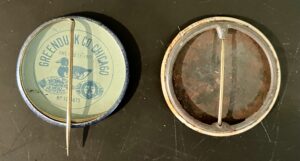
Every collector has their favorite way to clean cellos. At a flea market a little spit on your thumb and a rub on your shirt will give you an idea if the stain is coming off. Discoloration under the clear coating is called foxing and I have not found an antidote for that problem. An important warning!! don’t try any of these if the surface has a full thickness scratch or crack as the underlying content may be damaged and the surface may further deteriorate worsening the crack or causing the coating to separate from the underlying paper decal and fall off rendering your item nearly worthless. Many collectors use semichrome and one seasoned collector uses toothpaste; both of these not only clean but also polish the surface. Some pins in the wild are filthy and a little cleaning results in a dramatic improvement in appearance and value. Many collectors gamble on eBay hoping the visible stains are superficial and not deep foxing. I personally like a touch of Windex drying it immediately; the dirt on the paper towel is so gratifying. More recently, I have used “Meguiar’s Mirror Glaze” auto detailing compound. It is a little messy to work with but really cleans and polishes; it also removes discoloration that has bound to the cello surface. Below is an ebay purchase that I was convinced was foxed so I bid under the assumption it would not respond to my efforts; I was quite pleased when it “polished” up nicely. A word of advice, when buying from a seasoned collector you can assume they have already “worked their magic” so you won’t have much margin for improvement. One thing I have tried that should be avoided like the plague is the use of a dremmel to smooth bumps or surface irregularities. Nothing happens until the friction results in superheating the celluloid coating which melts an awful hole through the surface and the artwork.

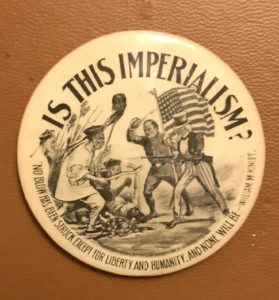
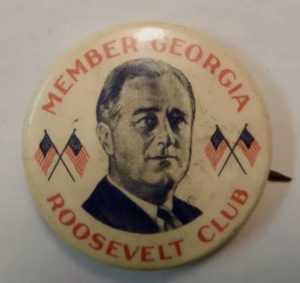
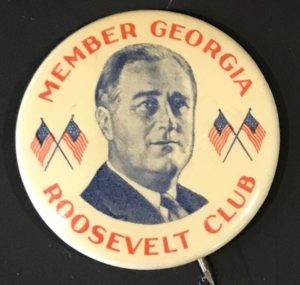

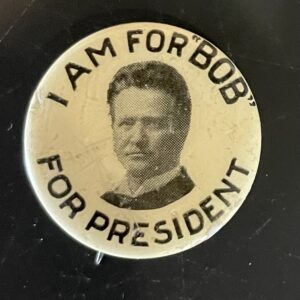

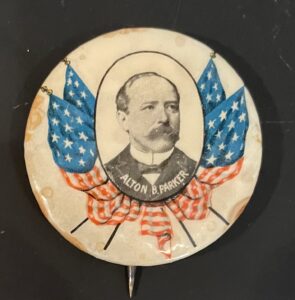
Lithos have very fragile surfaces and the image can literally be scrubbed away. For this reason many collectors avoid any cleaning other than a little water or spit on a soft cloth. Breweriana collectors clean their expensive trays with pledge wipes and I have found this works quite well but be very careful as vigorous cleaning will damage your pin. Try it on a back edge first.
I have experimented with some more invasive restoration techniques such as replacing collets that have fallen out over the years: this usually occurs with smaller manufacturers as I have never encountered a pin from Whitehead and Hoag or Bastian Bros with a missing collet. I have also tried patching holes punched through the button; I have no idea why people intentionally drove pins or nails through a button but strangely it is not that uncommon. When replacing a collet you need to find an organ donor with a collet of exactally the right size and ideally the right age. Sadly, the donor will be destroyed harvesting the collet, so a badly damaged button with little value is selected for sacrifice. Peel the button off the collet not vice versa and restore its shape as best you can. If it is the correct size it will pop into place but a touch of superglue will help hold it in if it isn’t secure. If you know the manufacturer you can also replace the back paper if you can find one on a less desirable pin. Repairing holes is quite challenging. I use modelling clay mixing colors to match and add glitter if necessary. Be patient it may take a couple of steps just like spackling a wall. Below are some examples of my restorations–of note I always disclose my efforts at resale. Sadly, I have tried many things to repair cracks and nothing thus far has worked to my satisfaction. The closest I have come is the application of liquid collodion but it is hard to get and the end result has an irregular surface. In Montana, cracks proliferate due to the low humidity so that is one type of damage I usually avoid when purchasing items for my collection as they worsen with time. Repair of dents can be done by turning the item upside down on a leather or felt pad and pounding them out using a broad surfaced tool or nail head. Older celluloid pins can have a brittle nature and can split and crack so be careful, more modern coatings tolerate this manipulation usually without adverse consequences.
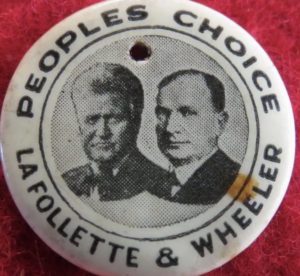
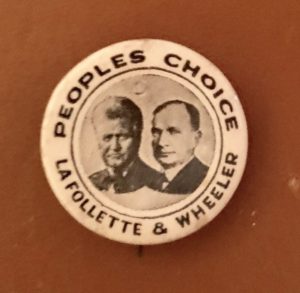
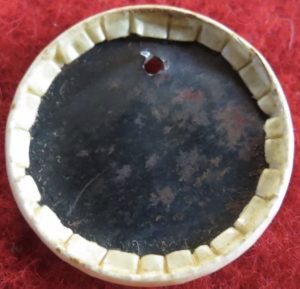
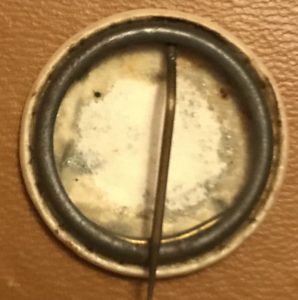
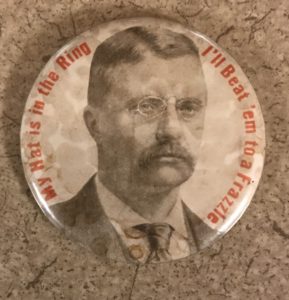
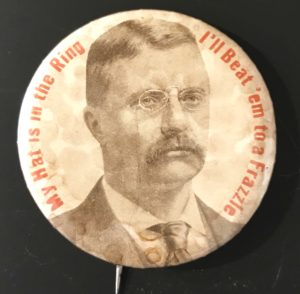
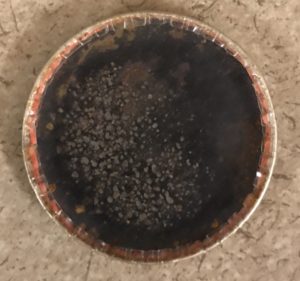
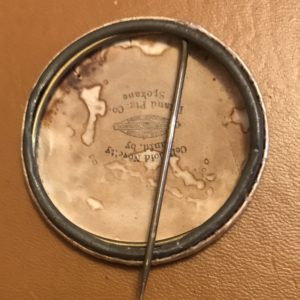
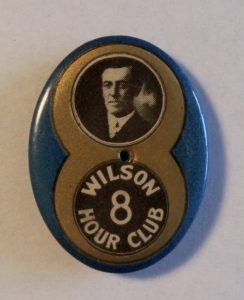

Another restoration that is quite controversial in the sports memorabilia hobby is paper restoration which if not disclosed can drastically change the grade of a baseball card. In our hobby palm cards don’t have value to justify professional restoration but some of our posters and banners do have monetary value that would warrant a several hundred professional fee. I would not begin to try this procedure but below are before and after pictures of a rare poster I had restored by Jamie Mendez.


Hope this has been helpful; contact me if you have any questions or items to sell (406)217-2017